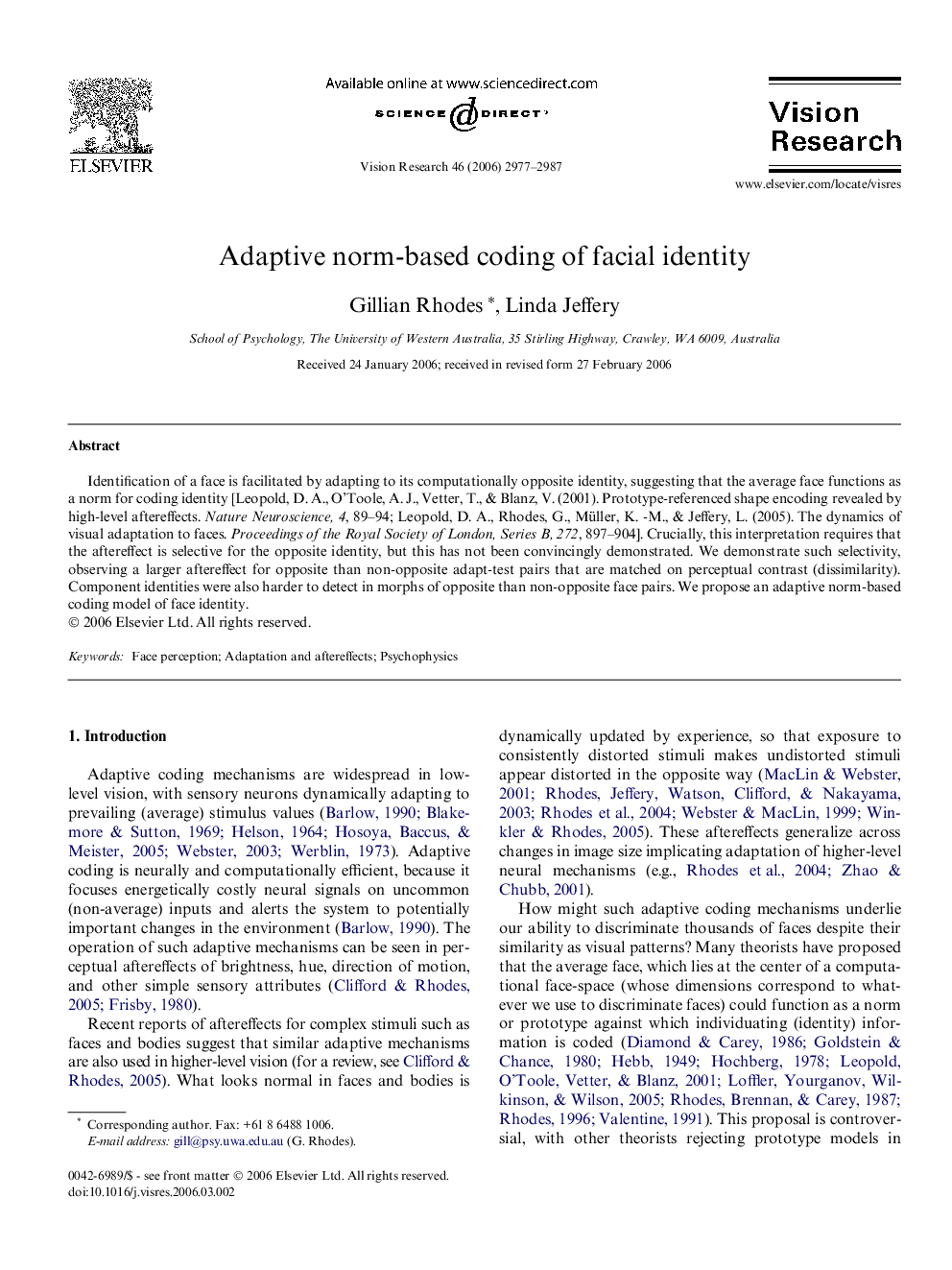| Article ID | Journal | Published Year | Pages | File Type |
|---|---|---|---|---|
| 4036631 | Vision Research | 2006 | 11 Pages |
Identification of a face is facilitated by adapting to its computationally opposite identity, suggesting that the average face functions as a norm for coding identity [Leopold, D. A., O’Toole, A. J., Vetter, T., & Blanz, V. (2001). Prototype-referenced shape encoding revealed by high-level aftereffects. Nature Neuroscience, 4, 89–94; Leopold, D. A., Rhodes, G., Müller, K. -M., & Jeffery, L. (2005). The dynamics of visual adaptation to faces. Proceedings of the Royal Society of London, Series B, 272, 897–904]. Crucially, this interpretation requires that the aftereffect is selective for the opposite identity, but this has not been convincingly demonstrated. We demonstrate such selectivity, observing a larger aftereffect for opposite than non-opposite adapt-test pairs that are matched on perceptual contrast (dissimilarity). Component identities were also harder to detect in morphs of opposite than non-opposite face pairs. We propose an adaptive norm-based coding model of face identity.
